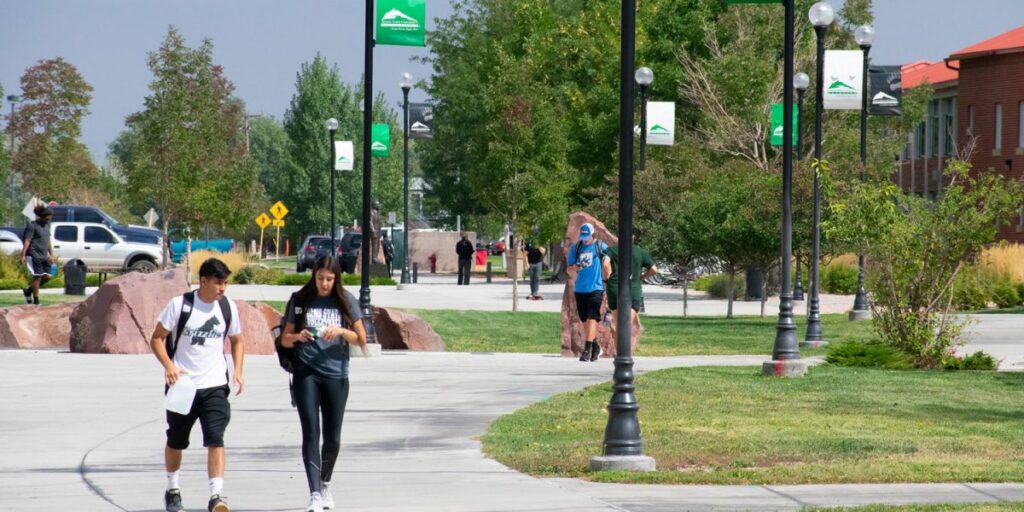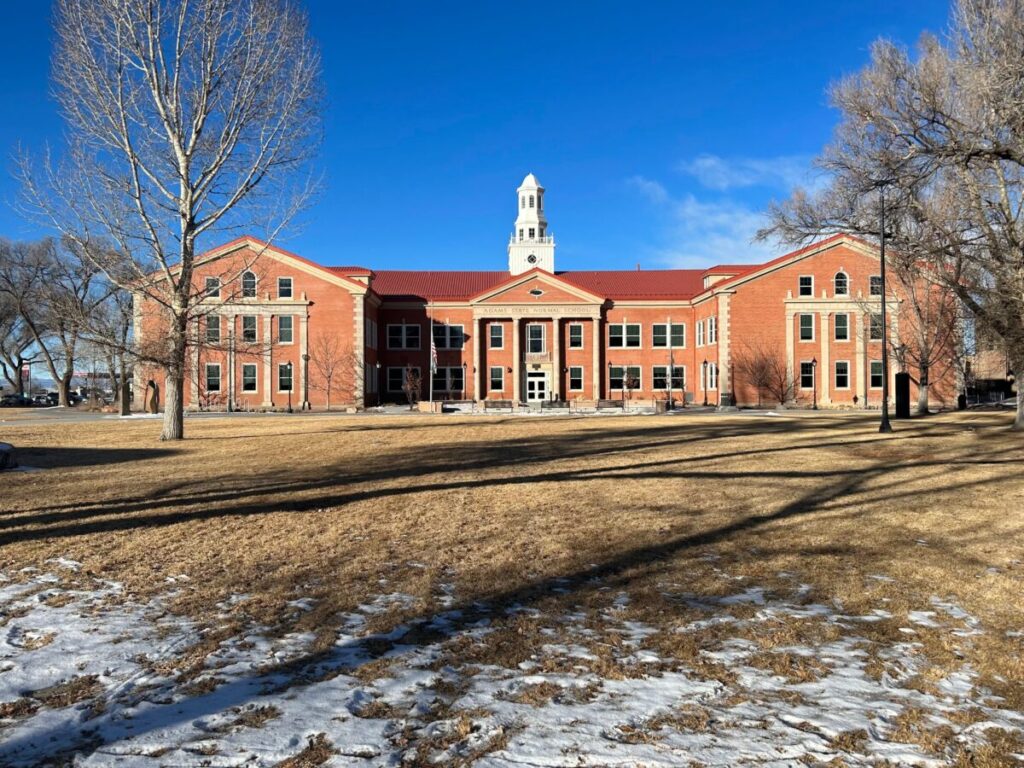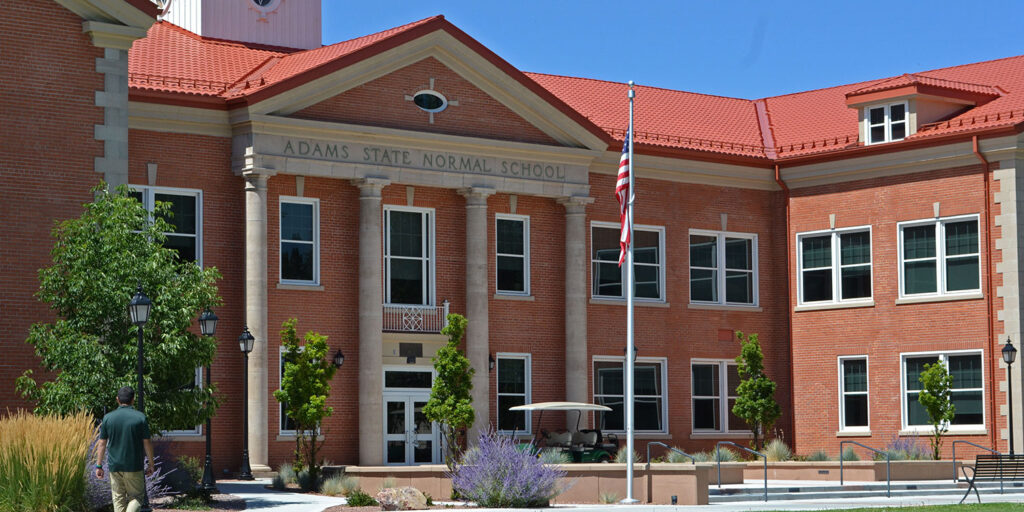Adams State University: Empowering Lives in Colorado’s High Plains
Tucked into the expansive San Luis Valley of southern Colorado, Adams State University (ASU) emerges as a vital hub of learning and growth against the dramatic backdrop of the Sangre de Cristo and San Juan Mountains. Established in 1921, this public university has transformed from a small teachers’ college into a multifaceted institution, offering a broad spectrum of programs while staying deeply connected to its rural roots. Known for its commitment to accessibility and community, ASU blends a picturesque setting with a dedication to shaping the futures of its students and the region. This article delves into the university’s history, academic strengths, student life, and its enduring role in the San Luis Valley.

A Legacy Born from Vision
The story of Adams State University begins with a dream of educational opportunity, sparked by Colorado Governor Billy Adams. In the early 20th century, the San Luis Valley—a remote, high-altitude basin—was rich in potential but short on resources for higher education. Adams, a former educator with a passion for teaching, saw the need for a local institution to train teachers for rural classrooms. His efforts culminated in the founding of Adams State Normal School in 1921, a modest venture aimed at serving the valley’s scattered communities.
Classes began in 1925 with a small cohort of 40 students, housed in basic facilities and guided by a handful of instructors. Over the decades, the school grew in scope and ambition. By 1945, it had evolved into Adams State College, broadening its offerings to include liberal arts and sciences. The leap to university status in 2012 marked a new chapter, renaming it Adams State University and cementing its place as a comprehensive institution with graduate and undergraduate programs. This evolution mirrors the tenacity of a region determined to carve out its place in the world, with ASU standing as a tribute to its founder’s foresight.
Academics Tailored for Today
Today, Adams State University enrolls around 3,000 students each year, delivering a personalized education with a 13:1 student-to-faculty ratio. Its academic structure includes schools like Humanities and Social Sciences, Science, Technology, Engineering, and Mathematics (STEM), Business, and Education, reflecting a balance of tradition and innovation. ASU’s hallmark is its adaptability, offering both on-campus learning in Alamosa and robust online programs that reach students far beyond Colorado’s borders.
The university excels in distance education, with online degrees ranging from bachelor’s to doctoral levels. Standouts include the Master of Arts in Counseling, the Master of Business Administration (MBA), and a Ph.D. in Counselor Education and Supervision—programs that draw working adults and career-changers seeking flexibility without sacrificing quality. On campus, undergraduates pursue degrees in fields like biology, psychology, kinesiology, and business, while the education programs remain a cornerstone, training teachers to serve diverse populations.
ASU’s facilities bolster its academic mission. The Nielsen Library and Zacheis Planetarium provide cutting-edge tools for exploration, while opportunities for undergraduate research—uncommon at smaller schools—allow students to tackle projects like studying local ecosystems or developing sustainable technologies. This hands-on approach ensures graduates leave with practical skills and a sense of purpose, whether they stay in the valley or venture further afield.

Life on a Mountain-Framed Campus
Adams State University’s campus sits in Alamosa, a town of just over 9,000 residents where the university is both a neighbor and a lifeline. Covering 90 acres, the campus mixes historic structures—like the 1925-built Richardson Hall—with modern hubs such as the Student Union and Rex Activity Center. Surrounded by towering peaks and near Great Sand Dunes National Park, the location offers a striking setting that shapes the student experience.
The intimate scale of ASU fosters a tight community feel. Students engage through more than 40 clubs, from academic societies to cultural groups and outdoor enthusiasts. The Outdoor Pursuits program taps into the region’s wild landscapes, organizing excursions for hiking, skiing, and kayaking. Athletics also thrive, with the ASU Grizzlies competing in NCAA Division II within the Rocky Mountain Athletic Conference. Teams in football, basketball, and wrestling—the latter a perennial powerhouse—draw spirited support, backed by facilities like Plachy Hall and specialized fields.
Housing options cater to a varied student body, from classic dorms to apartments, while support services like the Grizzly Testing and Learning Center and the Cultural Awareness and Student Achievement (CASA) Center ensure inclusivity. In this small-town university, students find a blend of independence and connection, shaped by both the land and the people around them.
A Catalyst for the San Luis Valley
Adams State University’s impact ripples through the San Luis Valley and beyond. As the region’s sole four-year institution, it anchors a rural area where economic and geographic challenges abound. The valley, known for its agricultural output and stark beauty, relies on ASU for jobs, education, and cultural vitality. The university’s presence helps retain talent and spark growth in a place that might otherwise struggle to keep pace with urban centers.
Community engagement is a priority, with initiatives like the Prison Education Program offering courses to incarcerated students, fostering second chances through learning. ASU also partners with local farmers and businesses to advance sustainable practices, reflecting the valley’s agrarian heritage. Its graduates—many of whom stay local—fill critical roles as educators, nurses, and leaders, reinforcing the university’s role as a springboard for upward mobility.
With a student body that’s roughly 40% Hispanic, ASU proudly carries its designation as a Hispanic-Serving Institution (HSI), a nod to its alignment with the valley’s cultural fabric. Online programs extend its influence nationwide and even globally, producing alumni who excel in fields from public service to scientific research, all while embodying the grit and heart of their alma mater.
The Road Forward: ASU in 2025 and Beyond
As of March 15, 2025, Adams State University is poised for continued growth while honoring its origins. Recent upgrades to labs, housing, and campus sustainability—like solar energy projects—signal a proactive stance. New programs in areas like cybersecurity and data science keep ASU relevant, preparing students for a tech-driven future. Yet, challenges persist, including funding hurdles and the task of drawing students to a rural outpost. Still, the university’s leadership sees its size as a strength, enabling close-knit learning and deep community ties.
Looking ahead, ASU aims to strengthen connections with Native American communities, whose presence in the valley dates back centuries, and expand its environmental focus. These efforts reflect a university that’s both grounded in its past and eager to innovate, ensuring it remains a vital force for years to come.

Conclusion
Adams State University is more than a campus—it’s a lifeline, a legacy, and a launchpad. From its founding as a teachers’ school to its current role as a dynamic university, ASU has woven itself into the fabric of the San Luis Valley, offering education that transcends barriers of distance and circumstance. With its rich academic offerings, lively student culture, and profound regional impact, Adams State University shines as a testament to the power of learning in even the most rugged corners of the world.